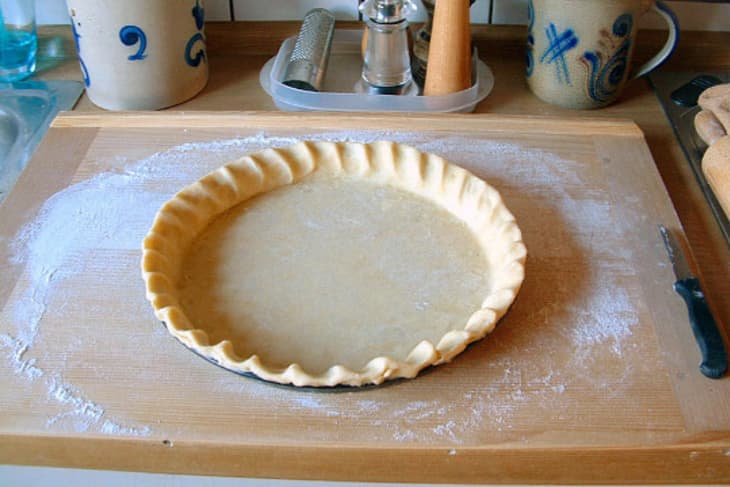Food Science: The Anatomy of a Pie Crust
While you’re busy dreaming up delicious pies to serve at your holiday dinners – or submit to our Best Pie Bake Off! – we thought we’d give you a tour of the part of the pie that sometimes gives us trouble (or nightmares): the crust!
At its most basic, pie crust is nothing more than flour, fat, and liquid. But if that’s all it is, why is pie crust so notoriously difficult to make by hand? Let’s take a look:
Flour: Flour is there for strength, structure, and elasticity. It’s the binder that holds the other ingredients together and, well, makes the pastry a pastry! For pie crusts, we usually use regular all-purpose flour instead of cake or pastry flour because we want some gluten development for structure, but not too much.
Remember – mechanical action creates gluten, so it’s important not to over-handle the dough.
Fat: You can use butter, vegetable shortening, lard, or even oil in pie crust, each to a different effect. Butter provides the most flavor and a wonderful melting quality in the mouth, but it tends to not make the most tender pastry. Shortening and lard make a very tender pastry, but don’t always have the best flavor for a sweet pie.
Also, if the fat is left in large pieces, the crust will be more flaky. If it’s incorporated into the flower more thoroughly, the crust will be tender and crumbly.
Liquid: The liquid in a pie crust creates the steam that lifts the pastry and creates flakes. It also gets absorbed into the flour, helping to create gluten. Too little liquid and the dough won’t hold together, but add too much and you’ll end up with a rock-hard crust!
Salt: It might sound odd to have salt in a sweet pie crust, but a pinch or two actually helps boost the flavor without making the crust taste salty.
Sugar: Not all pie crusts have sugar, but those that do will be more tender since sugar interferes with gluten development. In our experience, sugar can also make the pie dough so tender that it’s hard to roll out and transfer to your pan without breaking.
Egg: This makes the dough more pliable and easy to roll out. Eggs also make the crust more compact.
Acid and Alcohol: Both acid and alcohol tenderize pie dough, make it easier to roll out, and prevent it from shrinking in your pan. If these things give you trouble, try substituting a teaspoon of the liquid with lemon juice or a tablespoon or two with liquor. Vodka is often used because it won’t affect the flavor of the dough.
Do you have a favorite recipe for pie dough?
Related: Recipe: Basic Pie Crust
(Image: Flickr member Lisuebie licensed under Creative Commons)
